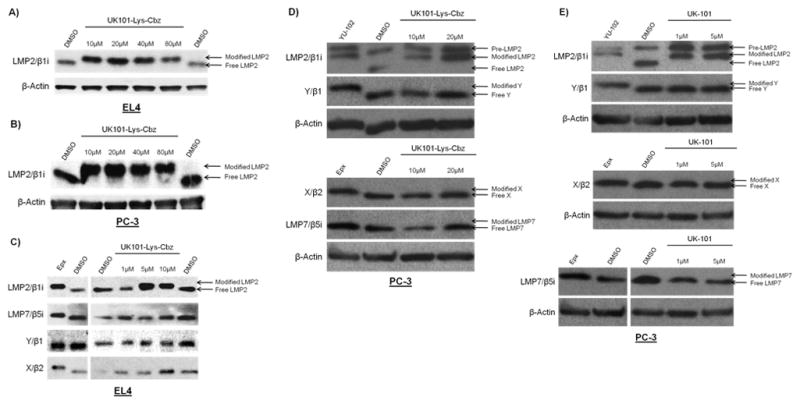Figure 4.

Binding specificity of the UK101-Lys-Cbz (8) and UK-101 (3). EL4 (A and C) or PC-3 (B, D, and E) cells were treated with DMSO (vehicle control) or increasing concentrations of UK101-Lys-Cbz or UK-101, lysed, and subjected to western blotting. Subunit binding specificity was determined using antibodies recognizing proteasome and immunoproteasome subunits. An upward shift of a band with respect to the DMSO control indicates an increase in molecular weight due to covalent modification. 1 μM epoxomicin-treated cells served as a positive control for LMP2, LMP7, and X band shifts in (C), and for LMP7 and X band shifts in (D and E). However, epoxomicin does not bind Y under these conditions, and therefore no shift is observed for this subunit in (C). For (D and E), 10 μM YU-102-treated cells served as a positive control for LMP2 and LMP7 band shifts.
